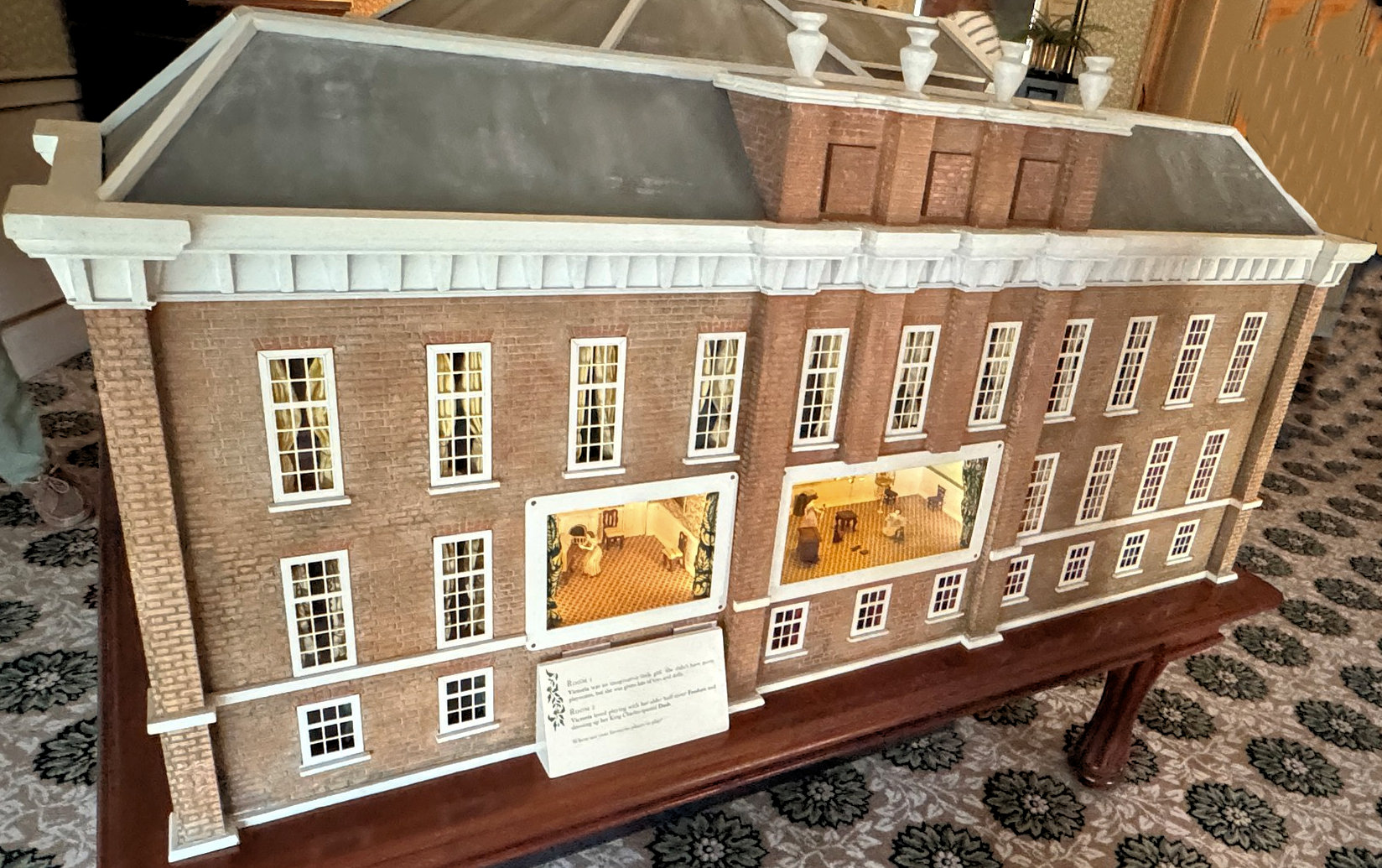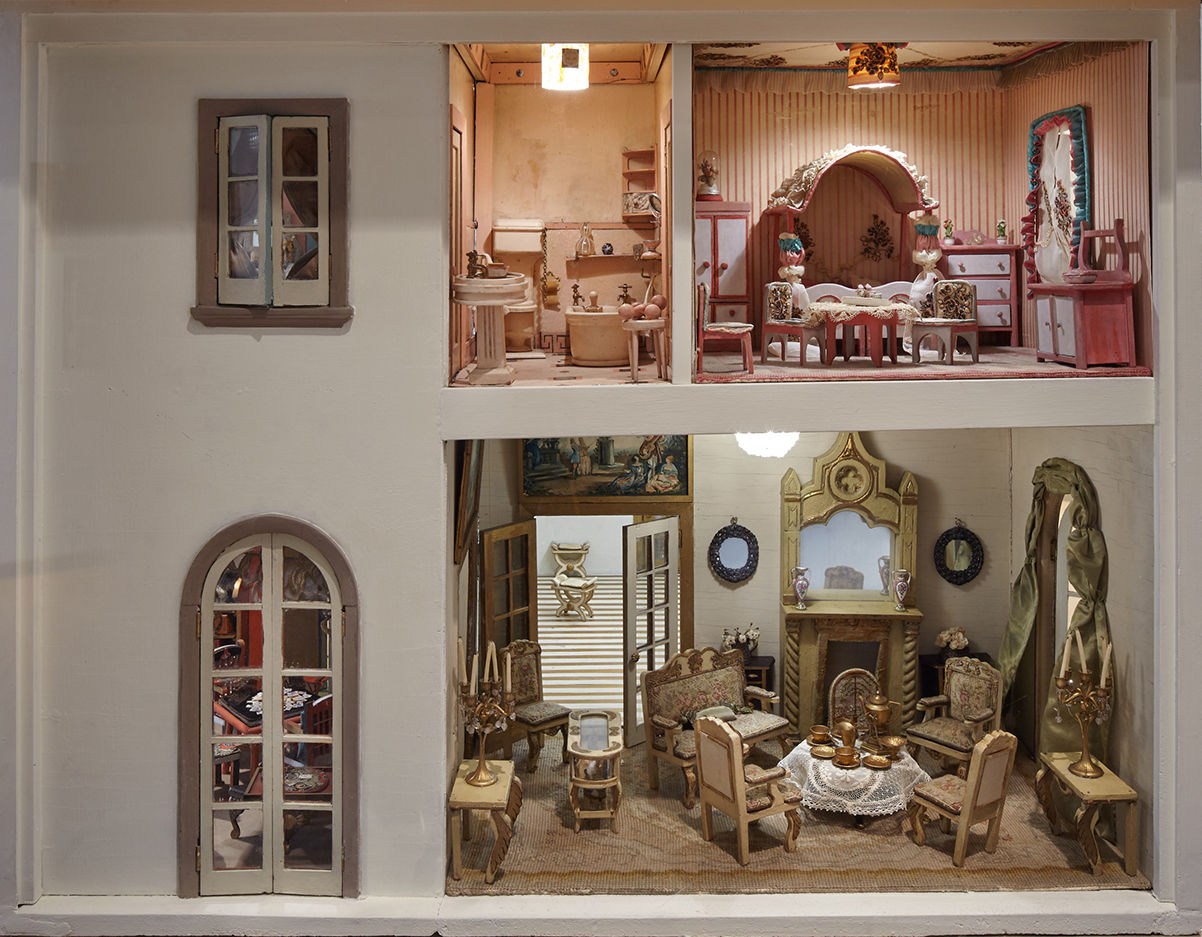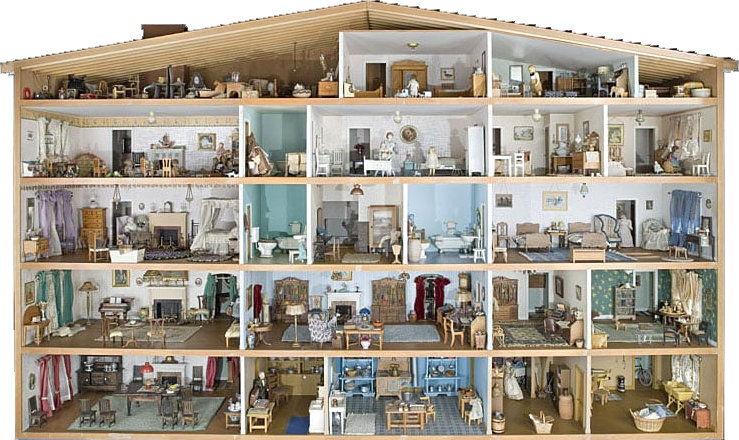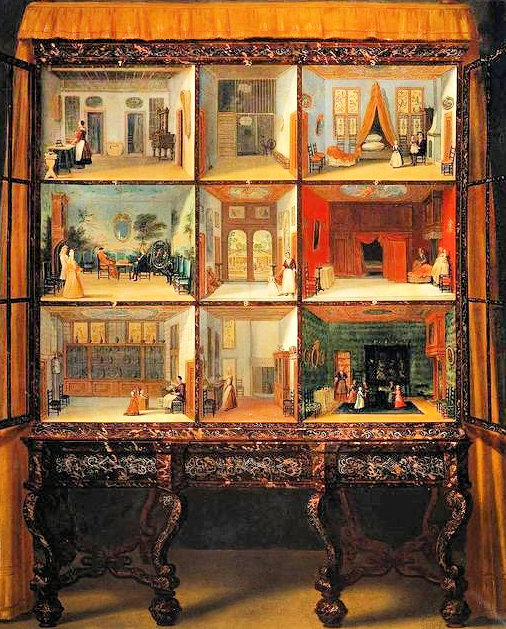Queen Mary’s Dolls’ House (Windsor Castle)

Built between 1921 and 1924 under Sir Edwin Lutyens, this house is a master-class in large-scale miniature architecture at 1:12 scale. Over 1,500 craftsmen contributed, creating working electricity, piped hot/cold water, a flushable toilet, miniature cars, and a library of tiny books by famous authors.
Dovetailed joints, marble floors, a miniature garden by Gertrude Jekyll, and handcrafted furniture showcase extraordinary attention to detail. It was intended as a showcase of British post-WWI craftsmanship.
Queen Victoria’s Childhood Dollhouse

Princess Victoria owned over 130 dolls and a dollhouse at Kensington Palace. The miniature furniture, household items, and textiles mirrored domestic life of early 19th-century nobility. The house contained upstairs entertaining rooms and downstairs servants’ quarters, demonstrating Victorian domestic ideals.
Stettheimer Dollhouse (Museum of the City of New York)

Built 1916–1935 by Carrie Walter Stettheimer, this house combines domestic architecture with modernist art. Interiors include miniature original artworks, furniture and décor accurately reflecting New York luxury apartments of the time.
Wood framing, scale-matched molding, built-in lighting, and miniature custom art pieces make this house both a toy and an immersive art installation.
Faith Bradford’s Dollhouse (“America’s Doll House”)

Exhibited at the Smithsonian, this five-story dollhouse has 23 rooms and 1,300+ miniature items, including period-appropriate appliances, textiles, and furnishings.
Construction used brass fittings, glass windows, real cloths, and handcrafted miniatures (buttons for plates, matchsticks for books) for faithful replication of early 20th-century American domestic life.
Doll’s House of Petronella Oortman (Rijksmuseum, Amsterdam)

Commissioned ca. 1686–1710, this 2.55 m high cabinet-style house features tortoiseshell veneer, pewter inlays, and meticulously scaled furniture. Interiors include silk drapery, marble floors, silverware, and miniature paintings by known artists.
Constructed as a collector’s showpiece, not a child’s toy, the house demonstrates extraordinary technical skill in woodwork, joinery, and miniature artistry.
Coleman Dolls’ House

Created in the early 20th century, the Coleman Dolls’ House is a highly detailed miniature house designed to display both craftsmanship and technical ingenuity. Features include a miniature elevator, fully paneled walls, and working light fixtures.
Furniture and fixtures were custom-made, including carved wooden chairs, upholstered sofas, tiny porcelain dishes, and functional miniature hardware. It exemplifies the finest British dollhouse construction standards of the era.